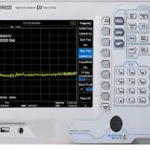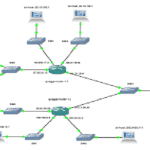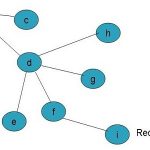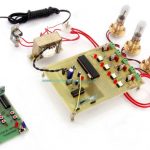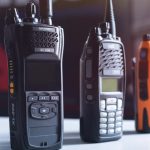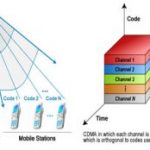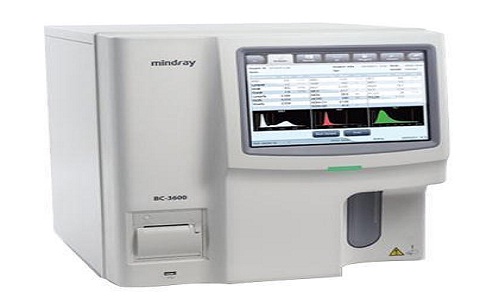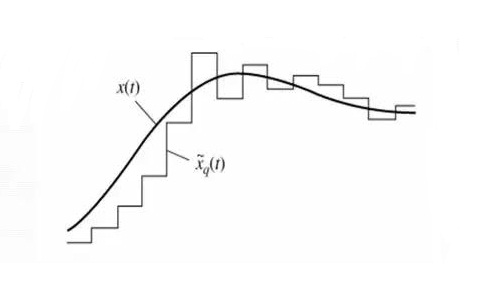These days, the communication network has been implemented with the growing technology. The communication between the computer networks is achieved very easily by dividing the networks into Local Area Networks (LANs) and Wide Area Networks (WANs). When all the physical devices of the network are connected to each other within the same network using a switch link, then it is called LAN. It is mainly used for official purposes. Similarly when the various networks with logical workstations are … [Read more...]
What is Spectrum Analyzer : Types & Its Applications
The one device which is more prominent in this digital industry is Spectrum Analyzer. This device holds a nearly 50-year history which consists of surmounting multiple complications in introducing the product to the real-time market. The development of the device initially took place at Applied Research Laboratories of Columbia University. The first developed spectrum uses glass acoustic delay lines, and it delivers real-time processing in the range of 1 – 40 kHz. And the initial development … [Read more...]
What is Network Simulation : Various Simulators & Tools
For almost every industrial and military application, there is the need of computer and communication networks and the requirement of these is progressing day-by-day. With these networks, one can expect enhanced service with perfect functional conditions. It is more crucial to know the network performance where it is used. Simulation is employed to demonstrate the final and exact outputs and activities of courses. As the network simulation has multiple advantages and applications, this article … [Read more...]
What is a Routing Algorithm & Its Types
In computer networks, the data is converted into packets to transfer from source to destination. For the transmission of data packets, the network layer decides the best path, through which the data is to be transmitted. The network layer provides datagram and virtual circuit services and also shows the best route to transfer the packets from source to destination. The network layers give routing protocol, which is a routing algorithm, that gives the best and least path through which data is … [Read more...]
RF Transceiver Module – Block Diagram & Its Working
Generally, an RF module is a small size electronic device, that is used to transmit or receive radio signals between two devices. The main application of the RF module is an embedded system to communicate with another device wirelessly. This communication may be accomplished through radio frequency communication. For various applications, the medium of choice is radiofrequency since it does not need a line of sight. The applications of RF modules mainly involve low volume and medium volume … [Read more...]
Wireless Radio Frequency Technology Working and Applications
The term wireless RF stands for “wireless Radio Frequency Technology”. If you are just starting with radios, this article can help. It is proposed to give a basic understanding of radio frequency,as well work as a quick reference for those who “know their knowledge” but may be observed to brush up on that one place that they never quite understood. Radio frequency is a measurement signifying the oscillation rate of electromagnetic radio waves or electromagnetic radiation spectrum of frequencies … [Read more...]
What is the Difference Between GSM and CDMA?
The cellular mobile service is being used everywhere in the world today. GSM and CDMA are two dominant technologies in the world of mobile communication. These two technologies differ in the way in which the calls and data transfer takes place over a network and mobile. This article discusses an overview of the difference between GSM and CDMA. What is GSM? GSM stands for Global System for Mobile Communication. It is a digital mobile telephony system used for trans-receiving of the data and … [Read more...]
Different Types of Wireless Communication Technologies
Wireless communication plays a significant role in day-to-day life. Besides communication, wireless technology has become an integral part of our daily activities. The transmission of data or information from one place to another wirelessly is referred to as wireless communication. This provides an exchange of data without any conductor through RF and radio signals. The information is transmitted across the devices over some meters to hundreds of kilometers through well-defined channels. The … [Read more...]
What is Wave Analyzer : Working & Its Applications
In electronics and communications, the periodic signal is represented in the form of DC component and some sinusoidal harmonics. It is necessary to analyze the harmonics present in the signal. So, wave analyzers are used to measure the amplitude of the harmonics in the domain of frequency with the help of tuned filters and voltmeters. The wave analyzer can be tuned to analyze the frequency of the harmonic component of the signal whose amplitude is to be measured. Here is a complete description … [Read more...]
What is an Adaptive Delta Modulation & Its Working
Delta modulation is basically analog to digital and a digital to analog signal conversion technique which is mainly used for data transfer. This type of modulation technique is used by the satellite business system, and it is also known as Differential pulse code modulation. This modulation technique is used to achieve high signal to noise ratio. Delta Modulation is basically of three types that are Adaptive Delta Modulation(ADM), Delta-sigma Modulation, and differential modulation. The ADM is a … [Read more...]

